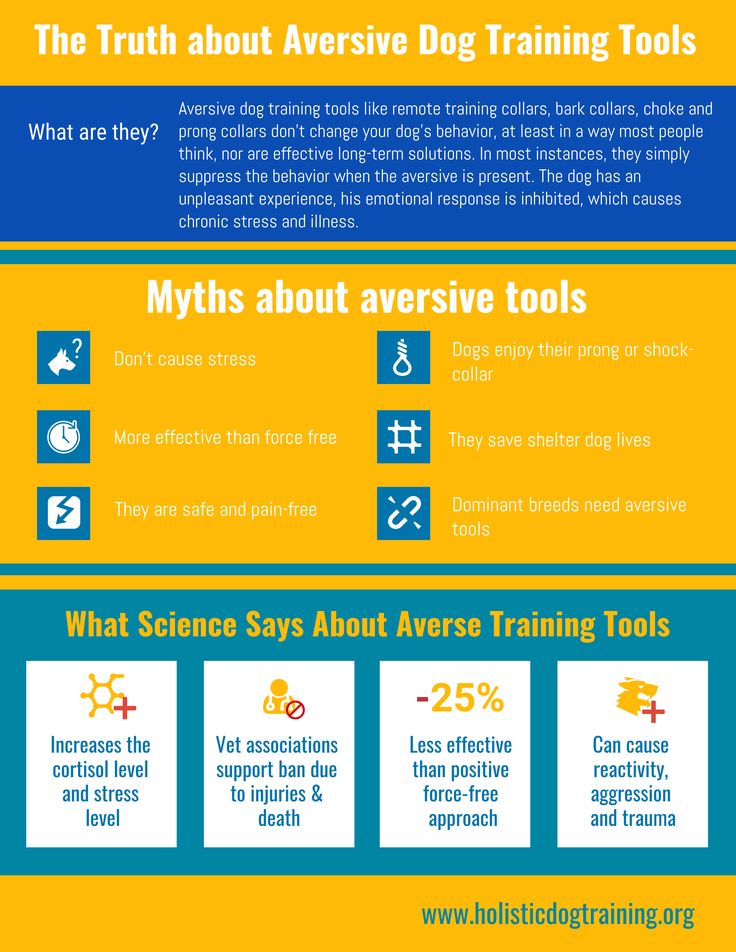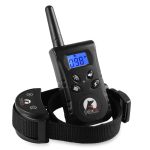Aversive dog training tools like e-collars, prong collars, and choke collars have been around for a long time, but in the last few years they’ve become all the rage. People use them for literally everything.

 Want your dog to sit? Give him a little zap and he will always sit when you ask him to. Your dog has separation anxiety? No problem! Just press a button and your problems will all be gone. Have an aggressive dog? Not with an e-collar, you don’t.
Want your dog to sit? Give him a little zap and he will always sit when you ask him to. Your dog has separation anxiety? No problem! Just press a button and your problems will all be gone. Have an aggressive dog? Not with an e-collar, you don’t.
Works great, right?
Let me preface what I’m about to say by telling you I feel certain that everyone who reads this loves their dogs and means them no harm.
I understand that having a dog who is considered reactive or aggressive can be a scary thing, and that losing a dog because of this behavior is an awful experience.
I will also admit that when I first got into the training business, my mentor suggested aversive tools like the e-collar as a viable solution to getting rescues adopted faster. I got one and tried it out because after researching it extensively, I bought into what the manufacturers told me.
12 years ago I came to the conclusion I was wrong, and that e-collar, prong, and choke collar manufacturers are lying just to sell you something. There is an $157 billion pet industry behind it making sure that you believe that they are a safe and harm-free way to train your dog.
In no way am I criticizing or blaming anyone who has used them because that would be hypocritical of me. You don’t know what you don’t know. However, I want you to understand exactly why so many countries and national organizations have banned e-collars and other aversive training tools like choke and prong collars.
The truth is that aversive tools can actually harm your dog both physically and emotionally, and don’t give you any sort of advantage over positive training methods. They can also irrevocably harm your relationship with your dog.
If I sound biased, it’s because I’ve spent many years working with dogs who have become reactive and even aggressive because of aversive methods being used on them. I’ve also spent countless years studying the research about this topic, which supports my experience. Don’t listen to me, listen to the words of countless countries, vets, national rescues, and professional organizations that have banned the use of them. I’ve also got science on my side.
Let’s take a look at the myths around aversive tools, and what science has to say about them.
Myth: Dogs Trained with E-collars Have No More Stress Than Those Who Don’t
63 pet dogs with recall issues were studied to see if there was a statistically significant difference between those trained with e-collars and those who were trained without. One third were trained with e-collars by professional trainers, another third were trained by the same trainers without them, and a third were trained without them and with different trainers.
The dogs were videotaped before, during, and after training, and tested for cortisol to see how stressed they were. 92% of the dog’s owners said that their recall was much better, but there was no significant difference between the dogs trained with and without e-collars.
What they did find significant is that dogs trained with e-collars had higher cortisol levels before, during, and after training sessions, exhibited more stress behaviors like yawning and tails between the legs, and were less engaged with their surroundings and their owners. (1)
The American Veterinary Society of Animal Behavior
In August 2021 AVSAB has released their updated statement on dog training that will replace their former statement on the use of punishment.
”“Many methods of changing behavior in dogs are effective; however, the evidence-based veterinarian or behavior consultant should be concerned not just with what is effective but what does the least harm and produces the best long-term results.”

